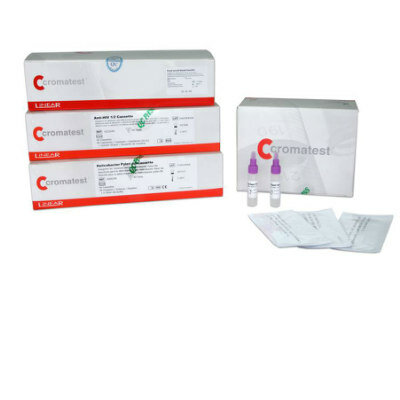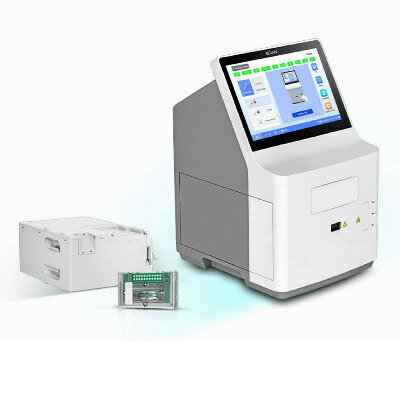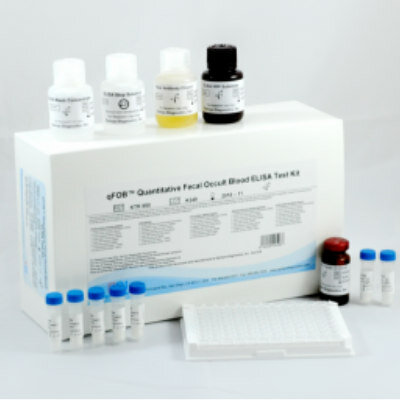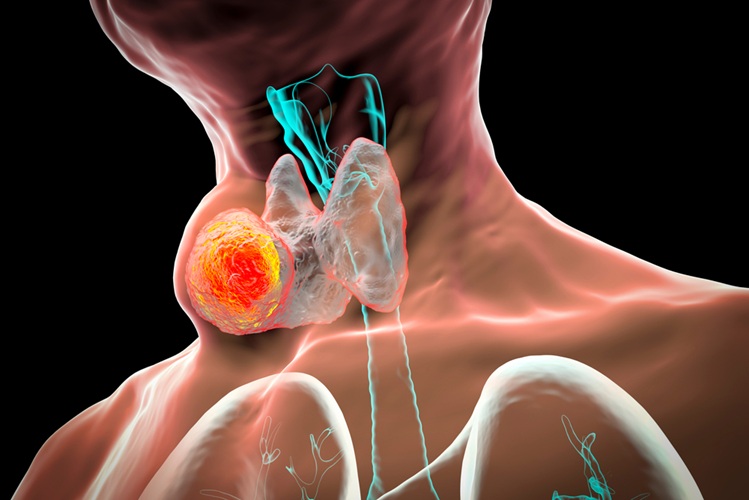Vitamin B6, B12, and Folate May Decrease Risk of Pancreatic Cancer
|
By Biotechdaily staff writers Posted on 13 Jun 2007 |
Researchers exploring the concept that certain nutrients might protect against pancreatic cancer discovered that lean individuals who got most of these nutrients from food were protected against developing cancer. The study also suggests this protective effect does not hold true if the nutrients come from vitamin supplements.
In a study published in the June 1, 2007, issue of the journal Cancer Research, investigators combined data from four large studies and found that individuals who were at or below normal body weight decreased their risk for developing pancreatic cancer if they took in high levels of vitamin B6, vitamin B12, and folate from food. The study determined that their risk was 81%, 73%, and 59% lower, vitamin B6, vitamin B12, and folate, respectively, compared with participants who did not eat as much of these nutrients or who weighed more. According to the researchers, that was the only statistically significant finding from the study, which is the largest yet to look at these nutrients and pancreatic cancer risk.
"All we can say is that a person who has reason to be concerned about their risk of developing this cancer, which is relatively rare but quite deadly, should maintain a normal weight and eat their fruit and vegetables,” said the study's lead investigator, Eva Schernhammer, M.D., Dr.P.H., an assistant professor of medicine at Harvard Medical School (Cambridge, MA, USA).
The researchers also reported that they discovered another interesting trend--that some people who received these nutrients from multivitamin pills had an increased risk of developing the disease. According to the researchers, individuals who stated that they used multivitamins, and whose blood showed traces of these nutrients, had a 139% increased relative risk of developing pancreatic cancer. "This is a preliminary, but intriguing, finding because it suggests that something in the vitamins may fuel pancreatic cancer growth,” Dr. Schernhammer said.
This is not the first study to suggest that folate, and vitamin B6 and B12--so called one-carbon nutrients--are protective against pancreatic cancer if they come from food, but not if they come from multivitamins, according to Dr. Schernhammer. One large Finnish study found one-carbon food nutrients were associated with a decreased risk of developing pancreatic cancer, but that vitamin pills were not helpful. Two other large American studies also found the food nutrients to be protective, but that vitamin use was associated with a higher, yet non-significant risk of developing the cancer.
In this study, researchers combined four large prospective cohort studies, The Women's Health Initiative, and three from the Harvard School of Public Health: the Nurses' Health Study, the Health Professionals Follow-up Study, and the Physician's Health Study. From this large database, they performed a prospective nested case-control study to examine plasma concentrations of the nutrients from participants who had donated blood and answered questionnaires about their food intake and vitamin use before any cancer developed. Their analysis included 208 pancreatic cancer cases and 623 cancer-free control cases.
No one knows why vitamin pills may not help ward off cancer, or why, in this study, it might have a destructive effect, according to Dr. Schernhammer, but some research in animals suggests, "if there is a dormant tumor, folate and other similar vitamins may stimulate growth.” That might be especially true if a person did not take in enough of these nutrients consistently through diet, and then suddenly started taking multivitamins in an effort to become healthy.
"People think that dietary intake of these nutrients reflects a lifelong healthy eating habit, and in those cases, these nutrients may be protective, but they could have an opposite effect if they are used in a person with an occult cancer,” Dr. Schernhammer said. "It might all depend on whether a person is cancer-free at the time they start using these nutrients.”
The same kind of association has been found with use of soy, which is an estrogen-rich food, according to Dr. Schernhammer. "Women who have eaten soy all their lives, such as people in Asia, have a reduced risk of developing breast cancer, but some studies have found that increased soy intake in women who have not eaten it before appears to be harmful.”
The researchers reported that their study cannot definitively state that one-carbon nutrients either pose a benefit or a hazard to most people, but they noted that it is the best analysis to date, performed outside of a randomized clinical trial.
The study was funded by the U.S. National Institutes of Health (Bethesda, MD, USA).
Related Links:
Harvard Medical School
In a study published in the June 1, 2007, issue of the journal Cancer Research, investigators combined data from four large studies and found that individuals who were at or below normal body weight decreased their risk for developing pancreatic cancer if they took in high levels of vitamin B6, vitamin B12, and folate from food. The study determined that their risk was 81%, 73%, and 59% lower, vitamin B6, vitamin B12, and folate, respectively, compared with participants who did not eat as much of these nutrients or who weighed more. According to the researchers, that was the only statistically significant finding from the study, which is the largest yet to look at these nutrients and pancreatic cancer risk.
"All we can say is that a person who has reason to be concerned about their risk of developing this cancer, which is relatively rare but quite deadly, should maintain a normal weight and eat their fruit and vegetables,” said the study's lead investigator, Eva Schernhammer, M.D., Dr.P.H., an assistant professor of medicine at Harvard Medical School (Cambridge, MA, USA).
The researchers also reported that they discovered another interesting trend--that some people who received these nutrients from multivitamin pills had an increased risk of developing the disease. According to the researchers, individuals who stated that they used multivitamins, and whose blood showed traces of these nutrients, had a 139% increased relative risk of developing pancreatic cancer. "This is a preliminary, but intriguing, finding because it suggests that something in the vitamins may fuel pancreatic cancer growth,” Dr. Schernhammer said.
This is not the first study to suggest that folate, and vitamin B6 and B12--so called one-carbon nutrients--are protective against pancreatic cancer if they come from food, but not if they come from multivitamins, according to Dr. Schernhammer. One large Finnish study found one-carbon food nutrients were associated with a decreased risk of developing pancreatic cancer, but that vitamin pills were not helpful. Two other large American studies also found the food nutrients to be protective, but that vitamin use was associated with a higher, yet non-significant risk of developing the cancer.
In this study, researchers combined four large prospective cohort studies, The Women's Health Initiative, and three from the Harvard School of Public Health: the Nurses' Health Study, the Health Professionals Follow-up Study, and the Physician's Health Study. From this large database, they performed a prospective nested case-control study to examine plasma concentrations of the nutrients from participants who had donated blood and answered questionnaires about their food intake and vitamin use before any cancer developed. Their analysis included 208 pancreatic cancer cases and 623 cancer-free control cases.
No one knows why vitamin pills may not help ward off cancer, or why, in this study, it might have a destructive effect, according to Dr. Schernhammer, but some research in animals suggests, "if there is a dormant tumor, folate and other similar vitamins may stimulate growth.” That might be especially true if a person did not take in enough of these nutrients consistently through diet, and then suddenly started taking multivitamins in an effort to become healthy.
"People think that dietary intake of these nutrients reflects a lifelong healthy eating habit, and in those cases, these nutrients may be protective, but they could have an opposite effect if they are used in a person with an occult cancer,” Dr. Schernhammer said. "It might all depend on whether a person is cancer-free at the time they start using these nutrients.”
The same kind of association has been found with use of soy, which is an estrogen-rich food, according to Dr. Schernhammer. "Women who have eaten soy all their lives, such as people in Asia, have a reduced risk of developing breast cancer, but some studies have found that increased soy intake in women who have not eaten it before appears to be harmful.”
The researchers reported that their study cannot definitively state that one-carbon nutrients either pose a benefit or a hazard to most people, but they noted that it is the best analysis to date, performed outside of a randomized clinical trial.
The study was funded by the U.S. National Institutes of Health (Bethesda, MD, USA).
Related Links:
Harvard Medical School
Latest BioResearch News
- Genome Analysis Predicts Likelihood of Neurodisability in Oxygen-Deprived Newborns
- Gene Panel Predicts Disease Progession for Patients with B-cell Lymphoma
- New Method Simplifies Preparation of Tumor Genomic DNA Libraries
- New Tool Developed for Diagnosis of Chronic HBV Infection
- Panel of Genetic Loci Accurately Predicts Risk of Developing Gout
- Disrupted TGFB Signaling Linked to Increased Cancer-Related Bacteria
- Gene Fusion Protein Proposed as Prostate Cancer Biomarker
- NIV Test to Diagnose and Monitor Vascular Complications in Diabetes
- Semen Exosome MicroRNA Proves Biomarker for Prostate Cancer
- Genetic Loci Link Plasma Lipid Levels to CVD Risk
- Newly Identified Gene Network Aids in Early Diagnosis of Autism Spectrum Disorder
- Link Confirmed between Living in Poverty and Developing Diseases
- Genomic Study Identifies Kidney Disease Loci in Type I Diabetes Patients
- Liquid Biopsy More Effective for Analyzing Tumor Drug Resistance Mutations
- New Liquid Biopsy Assay Reveals Host-Pathogen Interactions
- Method Developed for Enriching Trophoblast Population in Samples
Channels
Clinical Chemistry
view channel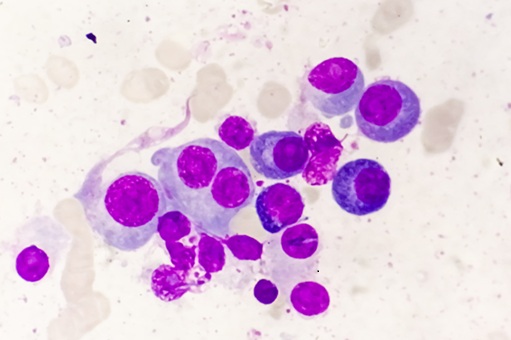
Mass Spectrometry-Based Monitoring Technique to Predict and Identify Early Myeloma Relapse
Myeloma, a type of cancer that affects the bone marrow, is currently incurable, though many patients can live for over 10 years after diagnosis. However, around 1 in 5 individuals with myeloma have a high-risk... Read more
‘Brilliantly Luminous’ Nanoscale Chemical Tool to Improve Disease Detection
Thousands of commercially available glowing molecules known as fluorophores are commonly used in medical imaging, disease detection, biomarker tagging, and chemical analysis. They are also integral in... Read more
Low-Cost Portable Screening Test to Transform Kidney Disease Detection
Millions of individuals suffer from kidney disease, which often remains undiagnosed until it has reached a critical stage. This silent epidemic not only diminishes the quality of life for those affected... Read more
New Method Uses Pulsed Infrared Light to Find Cancer's 'Fingerprints' In Blood Plasma
Cancer diagnoses have traditionally relied on invasive or time-consuming procedures like tissue biopsies. Now, new research published in ACS Central Science introduces a method that utilizes pulsed infrared... Read moreMolecular Diagnostics
view channel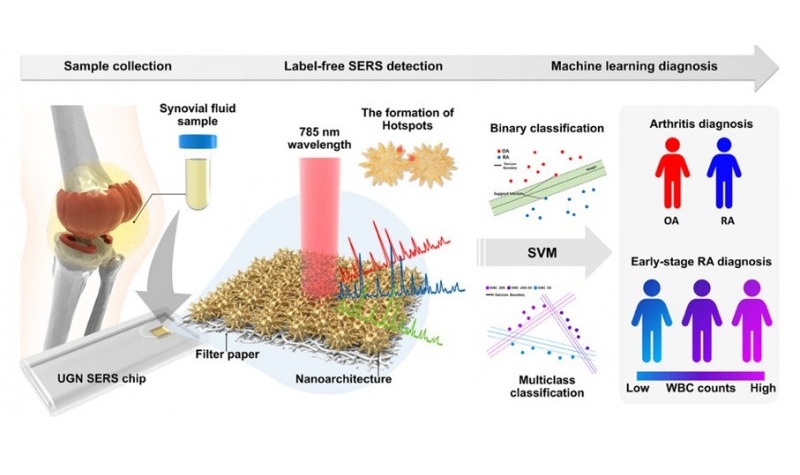
Ultra Fast Synovial Fluid Test Diagnoses Osteoarthritis and Rheumatoid Arthritis In 10 Minutes
Studies indicate that more than 50% of individuals aged 65 and older experience symptoms of osteoarthritis, while rheumatoid arthritis is a serious chronic condition affecting approximately 1 in 100 people... Read more
Genetic-Based Tool Predicts Survival Outcomes of Pancreatic Cancer Patients
A tumor marker is a substance found in the body that may signal the presence of cancer. These substances, which can include proteins, genes, molecules, or other biological compounds, are either produced... Read moreHematology
view channel
New Scoring System Predicts Risk of Developing Cancer from Common Blood Disorder
Clonal cytopenia of undetermined significance (CCUS) is a blood disorder commonly found in older adults, characterized by mutations in blood cells and a low blood count, but without any obvious cause or... Read more
Non-Invasive Prenatal Test for Fetal RhD Status Demonstrates 100% Accuracy
In the United States, approximately 15% of pregnant individuals are RhD-negative. However, in about 40% of these cases, the fetus is also RhD-negative, making the administration of RhoGAM unnecessary.... Read moreImmunology
view channel
Stem Cell Test Predicts Treatment Outcome for Patients with Platinum-Resistant Ovarian Cancer
Epithelial ovarian cancer frequently responds to chemotherapy initially, but eventually, the tumor develops resistance to the therapy, leading to regrowth. This resistance is partially due to the activation... Read more
Machine Learning-Enabled Blood Test Predicts Immunotherapy Response in Lymphoma Patients
Chimeric antigen receptor (CAR) T-cell therapy has emerged as one of the most promising recent developments in the treatment of blood cancers. However, over half of non-Hodgkin lymphoma (NHL) patients... Read moreMicrobiology
view channel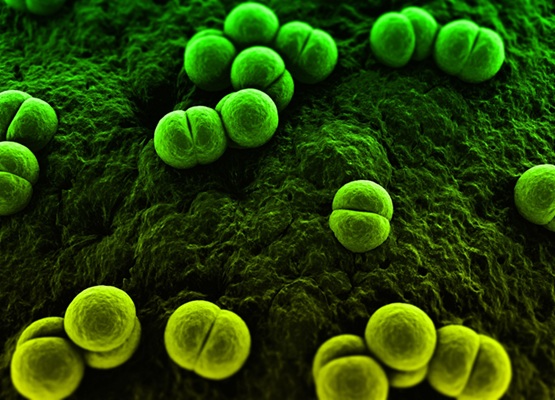
New Test Diagnoses Bacterial Meningitis Quickly and Accurately
Bacterial meningitis is a potentially fatal condition, with one in six patients dying and half of the survivors experiencing lasting symptoms. Therefore, rapid diagnosis and treatment are critical.... Read more
Handheld Device Delivers Low-Cost TB Results in Less Than One Hour
Tuberculosis (TB) remains the deadliest infectious disease globally, affecting an estimated 10 million people annually. In 2021, about 4.2 million TB cases went undiagnosed or unreported, mainly due to... Read more
New AI-Based Method Improves Diagnosis of Drug-Resistant Infections
Drug-resistant infections, particularly those caused by deadly bacteria like tuberculosis and staphylococcus, are rapidly emerging as a global health emergency. These infections are more difficult to treat,... Read more
Breakthrough Diagnostic Technology Identifies Bacterial Infections with Almost 100% Accuracy within Three Hours
Rapid and precise identification of pathogenic microbes in patient samples is essential for the effective treatment of acute infectious diseases, such as sepsis. The fluorescence in situ hybridization... Read morePathology
view channel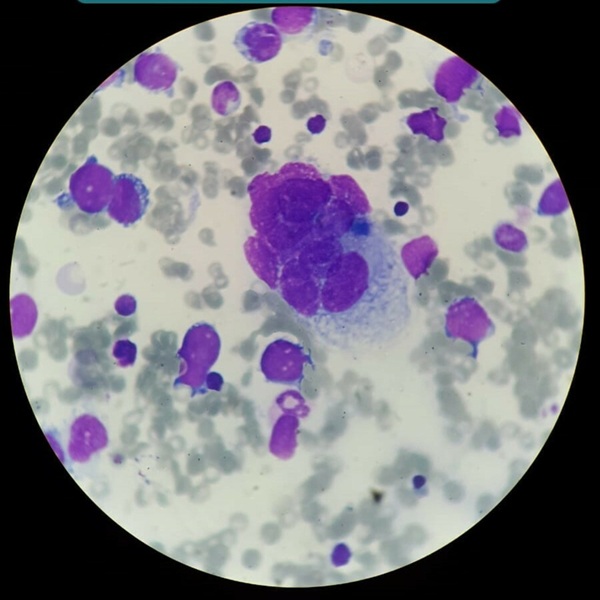
AI-Driven Analysis of Digital Pathology Images to Improve Pediatric Sarcoma Subtyping
Pediatric sarcomas are rare and diverse tumors that can develop in various types of soft tissue, such as muscle, tendons, fat, blood or lymphatic vessels, nerves, or the tissue surrounding joints.... Read more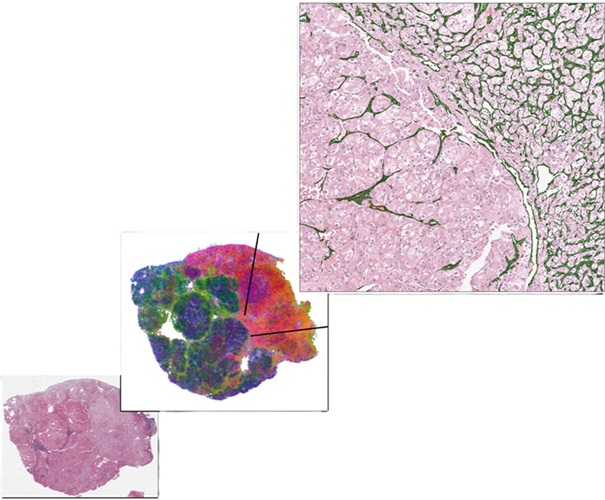
AI-Based Model Predicts Kidney Cancer Therapy Response
Each year, nearly 435,000 individuals are diagnosed with clear cell renal cell carcinoma (ccRCC), making it the most prevalent subtype of kidney cancer. When the disease spreads, anti-angiogenic therapies... Read more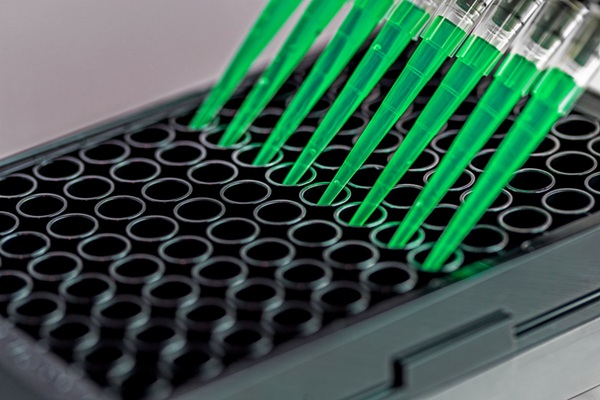
Sensitive and Specific DUB Enzyme Assay Kits Require Minimal Setup Without Substrate Preparation
Ubiquitination and deubiquitination are two important physiological processes in the ubiquitin-proteasome system, responsible for protein degradation in cells. Deubiquitinating (DUB) enzymes contain around... Read moreTechnology
view channel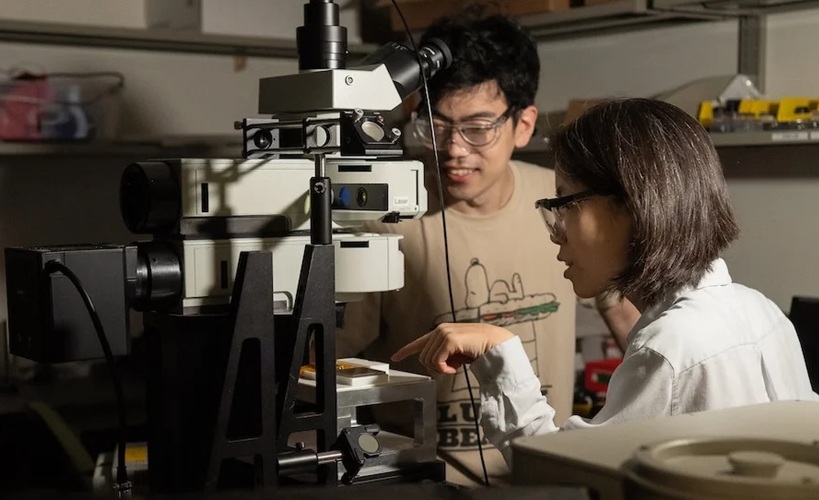
Light Signature Algorithm to Enable Faster and More Precise Medical Diagnoses
Every material or molecule interacts with light in a unique way, creating a distinct pattern, much like a fingerprint. Optical spectroscopy, which involves shining a laser on a material and observing how... Read more
Disposable Microchip Technology Could Selectively Detect HIV in Whole Blood Samples
As of the end of 2023, approximately 40 million people globally were living with HIV, and around 630,000 individuals died from AIDS-related illnesses that same year. Despite a substantial decline in deaths... Read more
Pain-On-A-Chip Microfluidic Device Determines Types of Chronic Pain from Blood Samples
Chronic pain is a widespread condition that remains difficult to manage, and existing clinical methods for its treatment rely largely on self-reporting, which can be subjective and especially problematic... Read more
Innovative, Label-Free Ratiometric Fluorosensor Enables More Sensitive Viral RNA Detection
Viruses present a major global health risk, as demonstrated by recent pandemics, making early detection and identification essential for preventing new outbreaks. While traditional detection methods are... Read moreIndustry
view channel
Cepheid and Oxford Nanopore Technologies Partner on Advancing Automated Sequencing-Based Solutions
Cepheid (Sunnyvale, CA, USA), a leading molecular diagnostics company, and Oxford Nanopore Technologies (Oxford, UK), the company behind a new generation of sequencing-based molecular analysis technologies,... Read more
Grifols and Tecan’s IBL Collaborate on Advanced Biomarker Panels
Grifols (Barcelona, Spain), one of the world’s leading producers of plasma-derived medicines and innovative diagnostic solutions, is expanding its offer in clinical diagnostics through a strategic partnership... Read more




